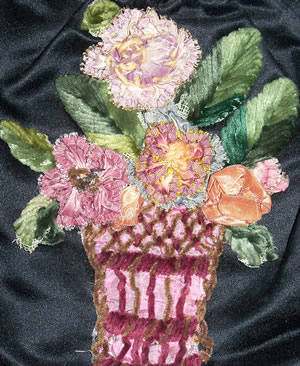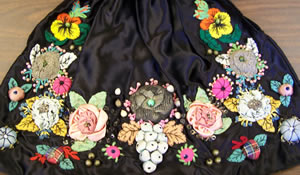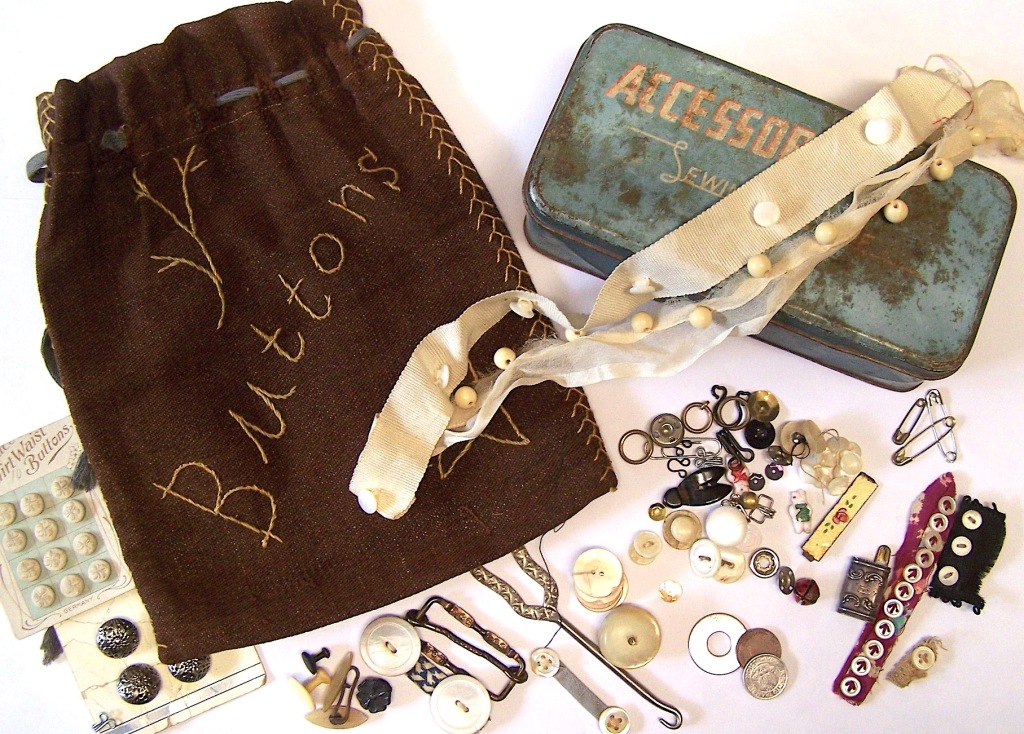
I LOVE buttons!!! As a kid my mom kept a wooden cigar box in the sewing cupboard, it was full of buttons and all manner of treasures! When we were sick, or sometimes just bored she would pull out the box and let us play with them. At first I just loved the sound that the buttons made when they fell on the table, then I loved just looking at the colors, then I started imagining what I would do with them all. I learned a lot about color, shapes and sizes by playing and arranging these little treasures on the rug in the living room. My mom in her quiet wisdom allowed us to explore, and to create our own self-taught course on design.
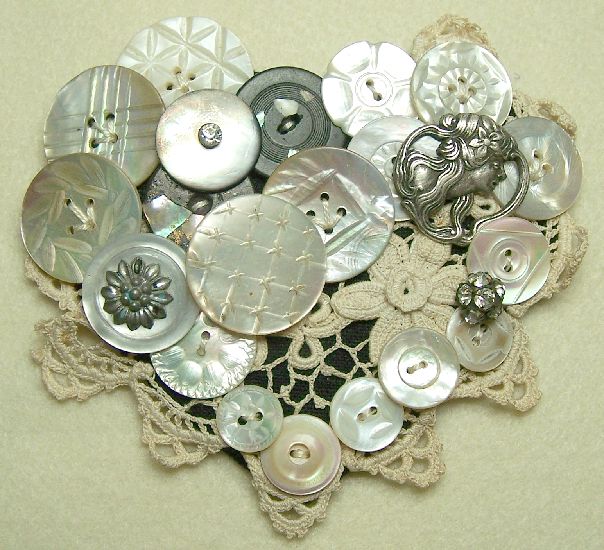
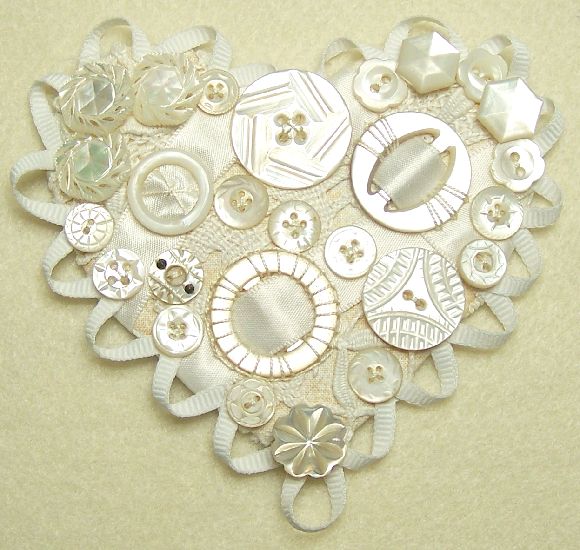

What button box, stash or hoard does not include mother-of-pearl buttons? Here are two pins that I have made for a project that is included in my new book, Creative Embroidery, Mixing the Old with the New. The last image shows you a shell that the button blanks were cut from, and a collection of buttons.
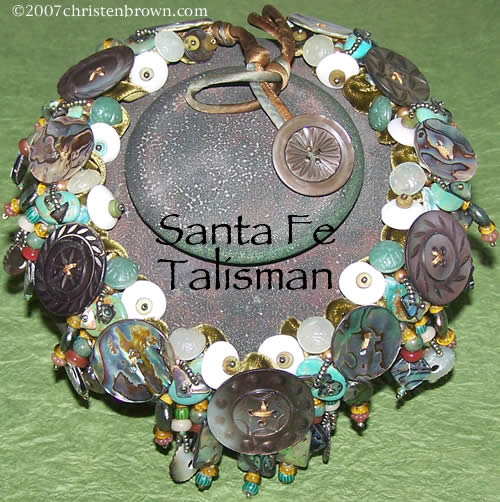
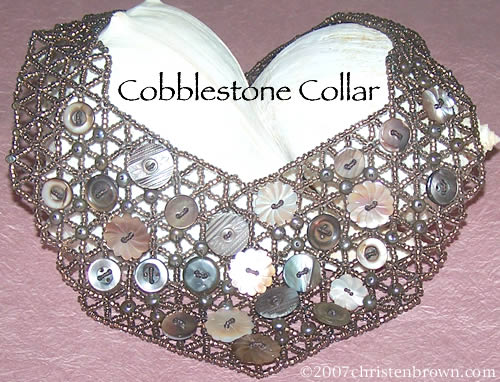
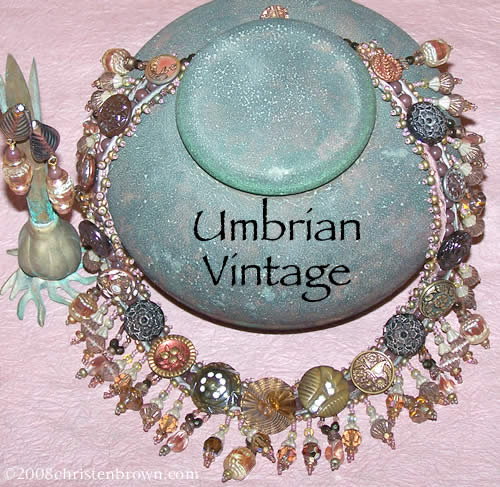
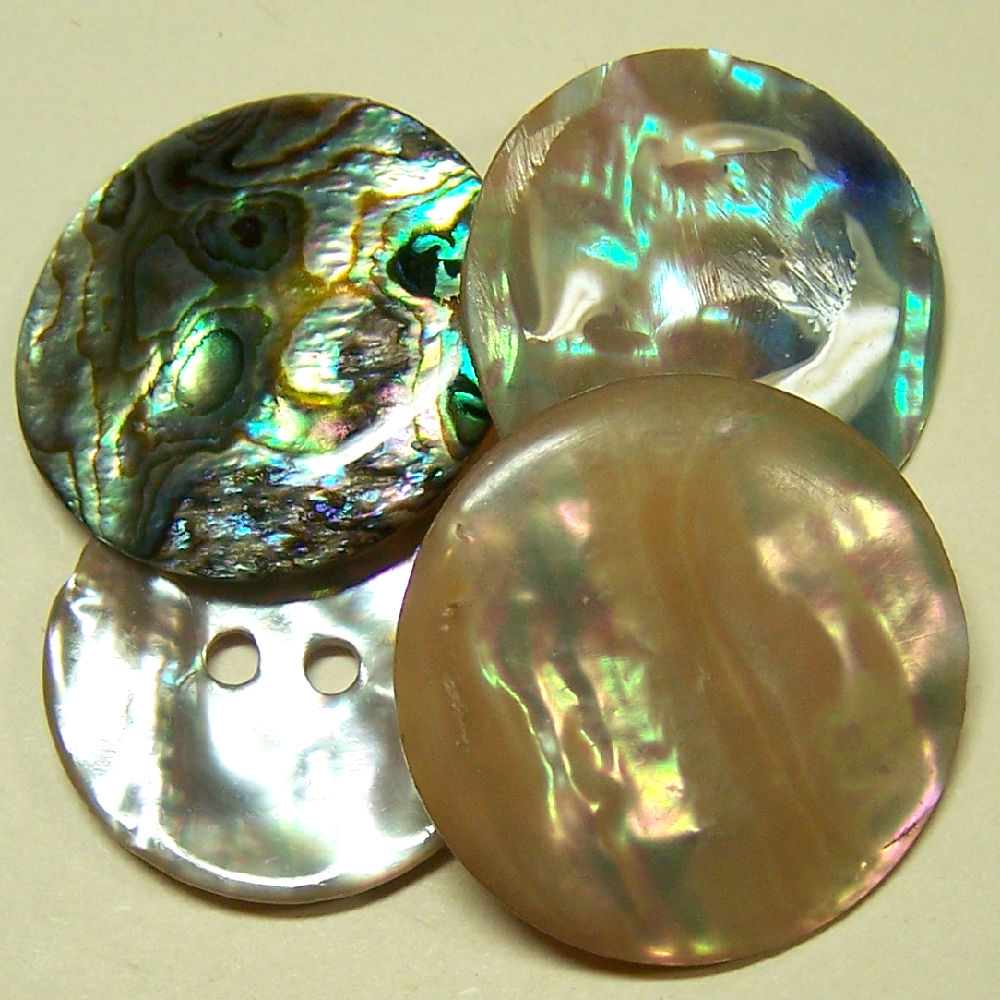


Every discerning collector has a favorite material or type of button that they collect. I happen to love all of them!
- Santa Fe Talisman starts with a base of velvet ribbon. I used abalone shell, brown muscle shell, jade and turquoise buttons. Additional components are glass seed and larger beads, shell and freshwater pearls.
- Cobble Stone Collar is entirely worked in a beaded stitch. The Tahiti and brown muscle shell buttons, and fresh water pearls were stitched on after the piece was stitched.
- Umbrian Vintage starts with a base of two silk rouleau cords, with the buttons and beads worked between them. I used metal, celluloid, and glass buttons as the focal points, with glass seed and larger beads for embellishments.
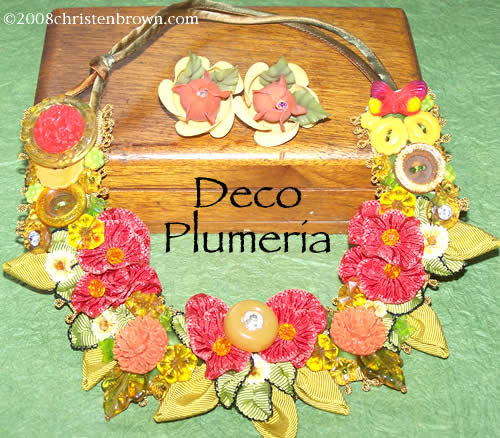
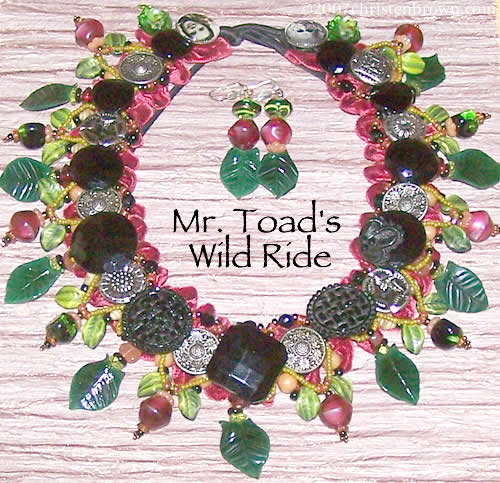

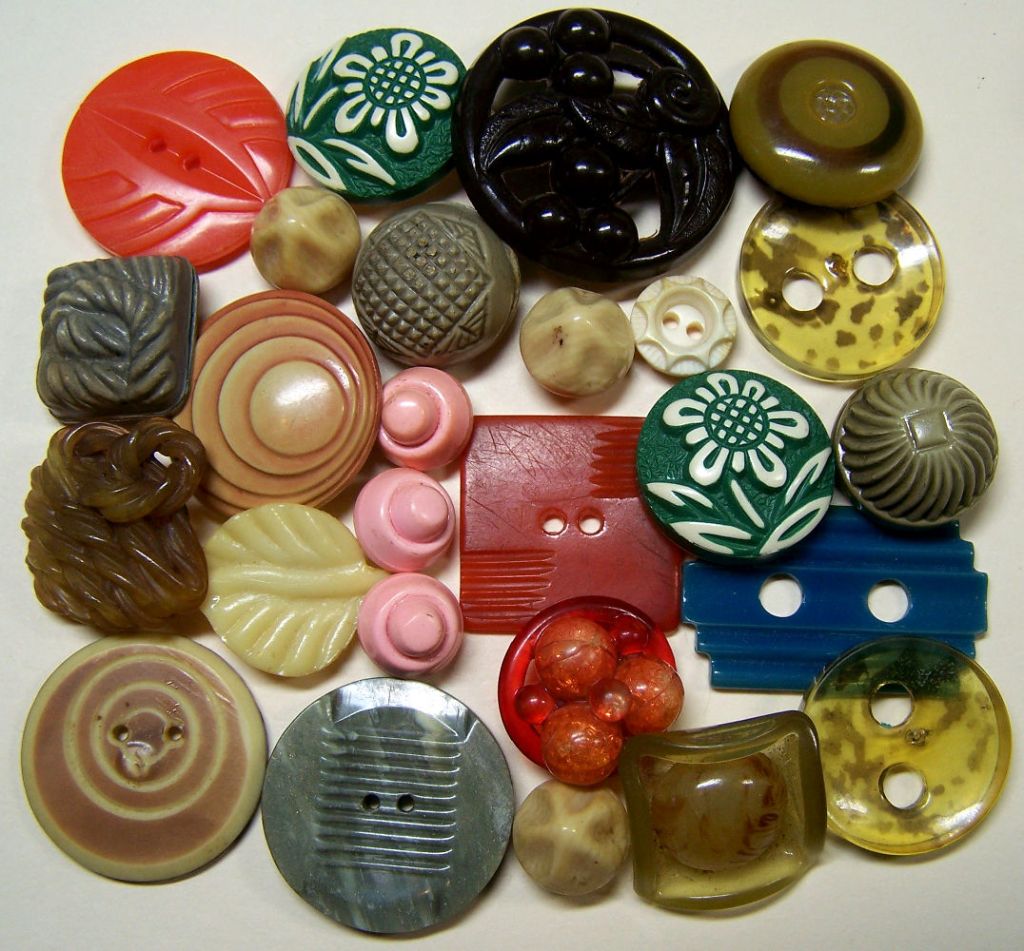


Buttons are easy to stitch in place with threads or beads, and therefor are not damaged in anyway. This way the beauty of the button can be appreciated, and the history preserved.
- Deco Plumeria started with a grosgrain ribbon base, with hand-stitched ribbonwork flowers and leaves. I embellished these with a collection of celluloid buttons and glass beads.
- Mr. Toad’s Wild Ride started with a velvet ribbon base. I used black glass buttons, metal buttons, and a few novelty buttons. The embellishments include vintage glass beads, seed beads and larger glass beads.
- Woodland Roses also started with a velvet ribbon base. I used carved Bakelite roses for the focal points, and surrounded them with a collection of tagua nut and celluloid buttons.
If you want to know more about buttons, check out Piecework Magazine July/August 2013, for an article that I wrote called My Button Box. And in my new book, Creative Embroidery, Mixing the Old with the New, by C&T Publishing, I have a chapter dedicated to “What’s in Your Stash”, with two pages dedicated to button materials, types and more.
I hope that you too have happy fond memories of your mom’s button box, bag, or jar! Happy Stitching, ~Christen


